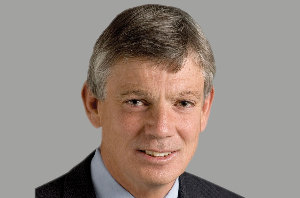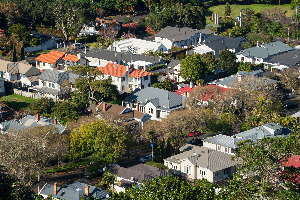
In a speech this morning, Reserve Bank governor Graeme Wheeler said the Bank’s February MPS included a neutral bias with an unchanged OCR track until late 2019.
Wheeler, who was talking about the main risks around interest rate projections, said the Bank’s assessment is that the risks around the OCR are equally weighted.
“This means that if the economy were to develop in line with the Bank’s economic projections, which are based on several assumptions, then the OCR would remain at its current level over the next two years.
“There is an equal probability that the next OCR adjustment could be up or down.”
When it comes to those risks, on the domestic side, the biggest economic uncertainty continues to be the housing market.
Wheeler said the possibility of worsening imbalances remains a major risk with continued low interest rates and strong migration, and rising construction cost inflation reflecting increasing resource pressures.
New Zealand house price indicators including house price growth, house price-to-income ratios and house price-to-rent ratios) are very high internationally and historically, he said.
“At a time of heightened uncertainty, households are particularly vulnerable to a correction in house prices given the large rise in household debt since 1990.
“Household debt is now equivalent to around 165% of household disposable income, up from 100% in 2000 and 60% in 1990.”
Further, many households will be exposed to a normalisation in mortgage rates, while the share of lending at debt-to-income ratios of over 5 and 6 has increased steadily for all borrower groups since September 2014.
Wheeler said that house price inflation has moderated substantially in recent months in response to increased housing supply, rising mortgage rates, the tighter lending criteria adopted by banks, and the impact of LVRs.
“It’s too early to say whether this moderation will continue.
“But future developments in respect of housing market imbalances and debt servicing costs are likely to be important influences on household spending and the level of aggregate demand in the economy.”
Meanwhile, the outlook for global growth has improved over the past six months due to rising commodity prices and stronger business and consumer sentiment.
But Wheeler said several major sources of uncertainty exist in Europe, China and the United States, and the balance of risk in the global economy is on the downside.
“Many of the risks in these regions are well known, and already reflected in relative prices such as interest rates, exchange rates and commodity prices.
“The greatest source of uncertainty relates to the US Administration policies in respect to its ‘America first’ policy platform. “
ASB economists said the various messages in Wheeler’s speech are exactly the same as in the February MPS with the Reserve Bank’s stance firmly neutral.
The risks to the inflation outlook remain balanced and, if the economy develops in line with the Bank’s current forecasts, the current OCR should be sufficient to return inflation to 2%, they said.
“The implications for the OCR outlook remain the same: the Bank expects it to be on hold for the next two plus years.”
ASB continues to expect a gradual tightening cycle to start from late 2018.
Westpac senior economist Satish Ranchhod said Wheeler’s speech does not alter their view around the timing of policy change from the Reserve Bank.
“While the next move in rates is likely to be up, we still expect the OCR to remain on hold at 1.75% for the foreseeable future.”
Read more:





Comments
No comments yet.
Sign In to add your comment